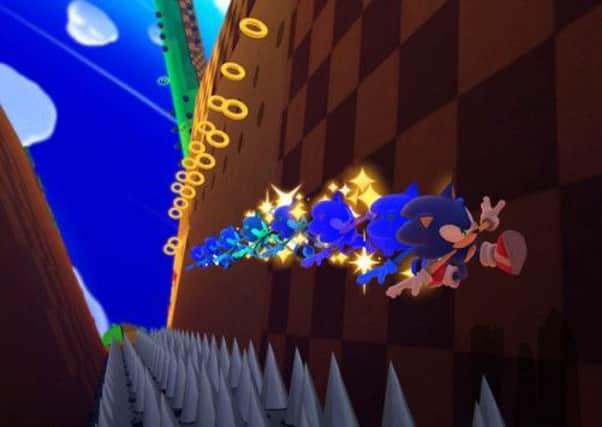Scotsman Games review: Sonic Lost World - Wii U


Sonic Lost World - Nintendo Wii U, Nintendo 3DS
Score: 6.6 / 10
No one has been quite sure what Sonic should be for quite some time now. After the blistering halcyon years of the 16-bit era, the series has suffered from repeated crises of identity, a demise sparked by the aborted Saturn project, Sonic X-treme, an attempt to graft another axis to its two dimensional traditions. Where once he stood as a mascot, the hedgehog has become a mauvais présage.
In the same way Spinal Tap stubbornly pursued a new jazz direction, Sega have strived to innovate their way out of the funk. Since the turn of the century, this stuttering revival has heralded a clutch of highlights - Sonic Advance and Sonic Generations being personal favourites - but also plumbed new depths; anyone who had the misfortune to purchase 2006’s Sonic the Hedgehog discovered a convoluted, glitch-ridden atrocity. Repeated titles, meanwhile, introduced a small town’s worth of extraneous characters. Remember Rouge, the sinister sexualised bat-cum-Knuckles clone who made Poochy from Itchy and Scratchy look like a masterpiece in subtly?
Advertisement
Hide AdAdvertisement
Hide AdWith every new iteration, the mammal’s considerable fanbase holds out hope that somehow, Sonic Team might stumble upon a happy marriage of breakneck pace with action platforming, reminiscent of its vintage. Sonic: Lost World - by my count the 32nd entry in the canon, excluding the blue one’s various cameo appearances - is not that game, unfortunately, but neither is it a reason for Sega’s followers to renounce their faith.
The title borrows ideas liberally from its predecessors, although its greatest influence is Super Mario Galaxy. Fusing traditional 2D sections with tilting spheres and revolving cylindrical courses - themselves interconnected by a series of springs, cannons and jumps - its remit is bold. When it flows correctly, it amounts to an exciting experience. Early levels such as Desert Ruins offer a good mix of routes to traverse and well-judged shifts in pace, as well as showcasing some lovely design. The vivid artwork pops and crackles, bearing recognisable motifs from the series without resorting to cheap nostalgia.
As the game progresses, however, its sensitive blend of mechanics becomes diluted by a reliance on the 2D elements, a mode of play that is not blessed with the fluidity of the Megadrive outings. The corpulence is made worse by framerate issues, the most heinous crime that can be committed any Sonic game; action that is supposed to tear along falters severely when a cluster of rings collide with an army of Badniks.
The narrative running through the game - a cursory plot involving Sonic teaming up with Dr Robotnik to defeat new foes - is geared towards a young audience, and a series of undemanding boss battles suggest the difficulty has been drastically toned down. That may well be Sega’s plan, but it is undermined by the ambition of its design. Landing after a jump is an inexact ordeal, especially when surging through elongated tubular sections which veer one way then the next. The same is true of the parkour elements, with Sonic inclined to run up any wall nearby even if you bid him otherwise, meaning that frustrating plunges into pits and chasms are all too frequent.
Contrary to those who refuse to remove their rose tinted glasses, Sonic’s 16 bit outings were never unbridled exercises in vertebrae-shattering speed. Those long, ecstatic runs were always punctuated by carefully considered platforming sections. Such was the desperation of subsequent games to appease classicists, sprinting became the be all and end all, leading to unsatisfying on-rails gameplay. Simply put, the best Sonic games were never made great by their speed, but their rhythm.
Sonic Lost World goes some way to correcting such mistakes, although there is a sizable gap between Sega’s intention and its execution. Having undergone more reboots than a fourth-generation cobblers, its flagship series is now the ripe old age of 22 and has yet to relive its glory days. Its Wii U debut offers signs that the developer is fumbling in the right direction, but as any Sonic fan can tell you, all it takes is one misplaced step to lose momentum.